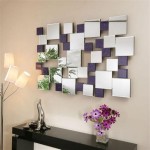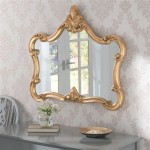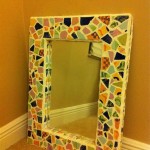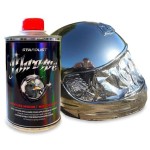The Science Behind One-Way Mirrors: How They Work
One-way mirrors, often referred to as "two-way mirrors," are fascinating optical devices that create the illusion of seeing through a surface while remaining hidden on the other side. These mirrors are not truly one-way, but rather cleverly manipulate the reflection of light to create a visual disparity between the two sides. The magic lies in understanding the interplay of light, reflectivity, and the surrounding environment.
The Principle of Reflection
The foundation of one-way mirror technology rests upon the fundamental principle of reflection. When light encounters a surface, it can either be absorbed, transmitted, or reflected. In the case of mirrors, the surface is designed to reflect a significant portion of the incoming light. The reflectivity of a surface is determined by its material composition and the angle at which light strikes it.
Mirrors typically use a highly reflective material, such as silver or aluminum, coated onto a glass surface. This coating maximizes the amount of light reflected back, making the surface appear highly reflective. However, in the case of one-way mirrors, the reflectivity is not absolute; a small portion of the light is actually transmitted through the glass.
The Illusion of One-Way Viewing
The key to the one-way mirror's illusion lies in the difference in illumination between the two sides. The side with brighter lighting appears highly reflective, like a traditional mirror, while the side with dimmer lighting appears transparent. This disparity arises from the way light interacts with the reflective surface.
Imagine a one-way mirror separating a brightly lit room (A) from a dimly lit room (B). Light from room A, being more intense, is primarily reflected back into the room, making the mirror surface appear opaque to observers in room A. However, light from room B, being less intense, can partially penetrate the mirror and reach observers in room A. This creates the visual effect of seeing through the mirror from room A, while observers in room B are unable to see through.
The Role of Light Intensity
The effectiveness of a one-way mirror is heavily dependent on the difference in light intensity between the two sides. The greater the difference in illumination, the more pronounced the one-way effect becomes. In a typical one-way mirror setup, the brightly lit side serves as the observation point, while the dimly lit side remains hidden.
For example, in interrogation rooms, the suspect's side is kept dimly lit, allowing the investigators observing from a brightly lit room to see through the mirror. The suspect, on the other hand, sees only their own reflection, unaware of the presence of the observers.
Applications of One-Way Mirrors
One-way mirrors find applications in various fields, often exploiting their ability to observe without being observed:
- Law Enforcement: One-way mirrors are commonly used in interrogation rooms and observation points to allow investigators to monitor suspects discreetly.
- Retail: Stores use one-way mirrors to prevent shoplifting and enhance security. They can also be used for customer observation and product display.
- Psychology Research: Psychologists use one-way mirrors in research settings to observe subjects without influencing their behavior.
- Scientific Experiments: One-way mirrors facilitate observing experiments or subjects without disturbing the environment.

How Does One Way Mirror Work

Buyer S Guide Selecting The Best Mirror For Your Observation Room Two Way Mirrors
Is There Such A One Way Mirror

One Way Mirror Smart Glass For Interior Design Chiefway

Diurnalearn How Do One Way Mirrors Work

One Way Mirror Window Medium Purlfrost

The Science Behind One Way Mirrors How Do They Work

How A Two Way Mirror Works

How Does A Two Way Mirror Work

This Light Bending Cube Of One Way Mirrors Will Really Trip You Out Twistedsifter








